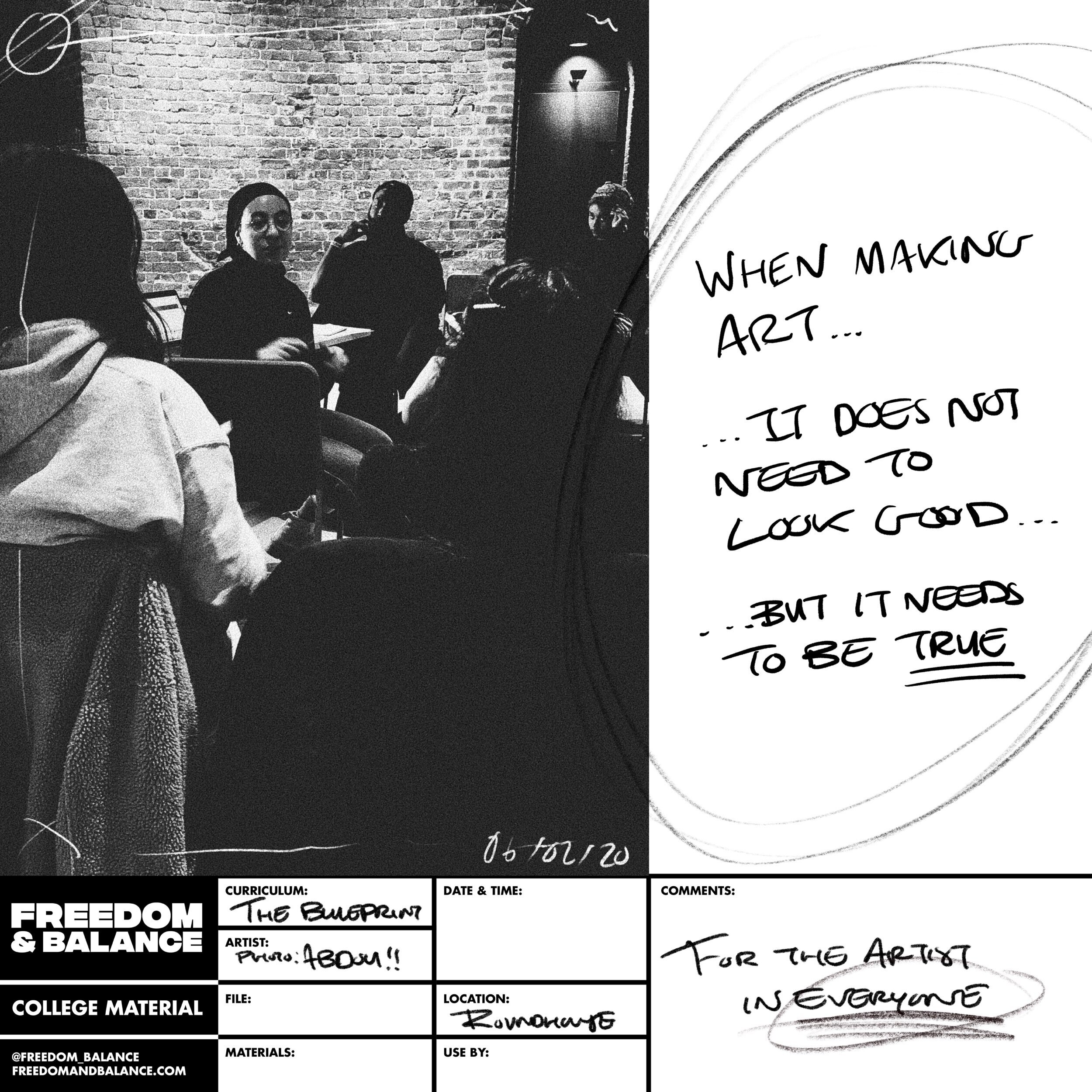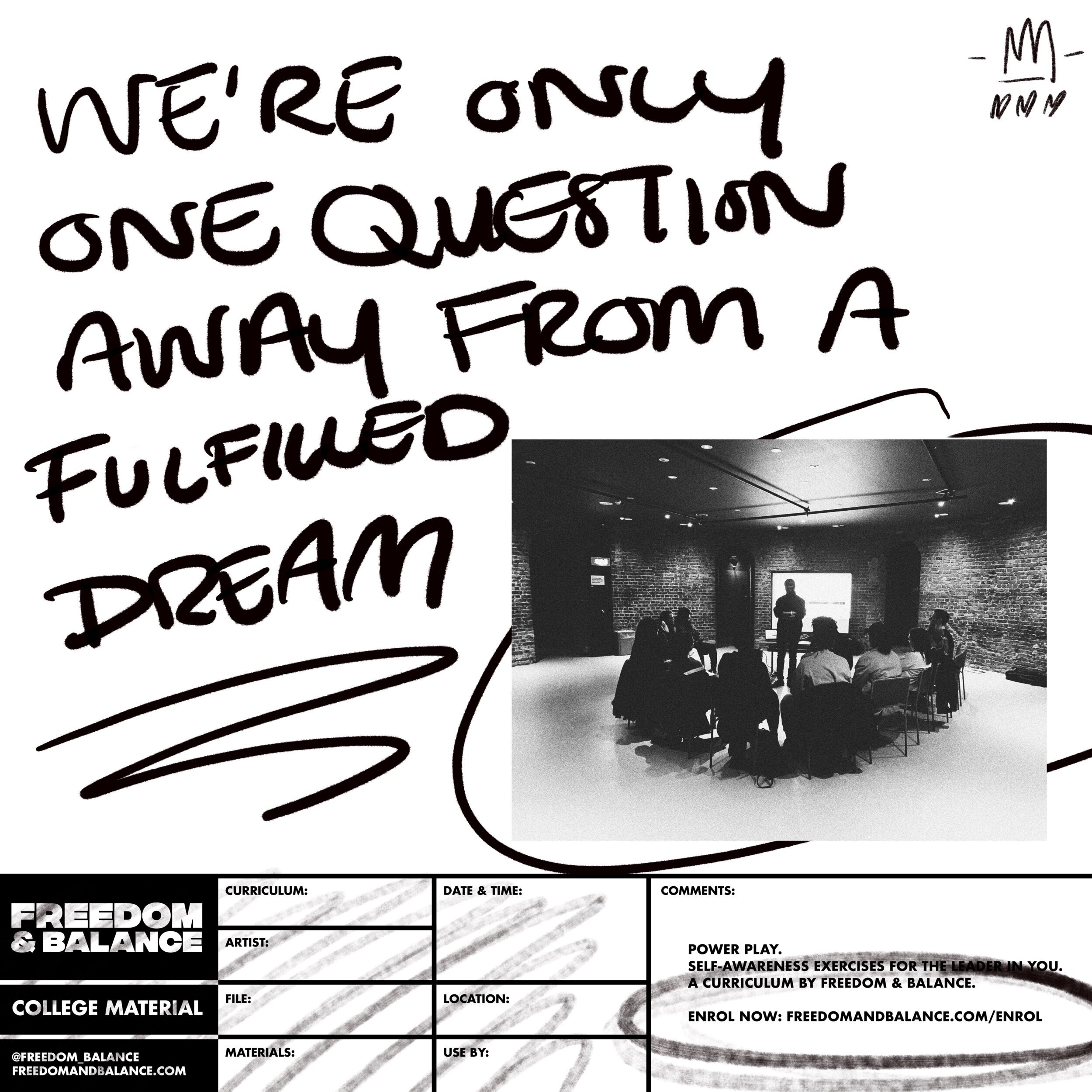Last week El Warcha met on zoom with André Anderson the headmaster of FREEDOM & BALANCE, a collective and experimental Art University based in North West London. The collective ambitious first project was to turn Chalkhill estate into a publishing house. Authors of the Estate is a powerful, self funded dream that inspired 22 writers to come together and publish a book in 12 weeks. In 2020 they started: the curriculum, an online art university with weekly briefs for students to develop their skills as designers and artists.
“We are Freedom & Balance, an art college for the artist in everyone. We believe that an art college done well can help you ask the right questions in new ways, in a world that is ever-changing and in need of solutions. We believe that art is not just an activity for the gifted few, but a way of thinking that can be applicable to the personal, professional and social lives of everyone. We design curriculums to help you exercise your creative identity week-by-week, season-by-season.”
For young people in Chalkhill estate formal education is not strong, you are taught just enough to get a working job, creative thinking is put to the side. When we started the project we thought we were going to hire a room in the estate, we put posters up and expected that people would show up, seat down together and write. There was a Qr code on the poster linking to a video where I introduced myself as the “headmaster of the college” and presented the concept of the “publishing house”. I had prepared myself to give a great speech in front of everyone... No one responded to my call, this was too much, no one understood what I was trying to do, the language I was using and the form it took was not accessible. In the end I made another poster: “Shakhill has a story to tell” with my number on it. I striped it down to the most important, the res had to come afterwards.
For the first hour no one showed up, two older man came eventually, guys who had been around as kids in the eighties, I wasn’t sure what to do, but I didn’t want them to wait around in an empty room. It couldn’t be just about seating together and writing. No one wants to write a book, people want their stories to be told but you have to make the case for the medium itself. There is a gap when you start a project between what you want and other people’s expectation or needs. The process involves bringing the two together, it is about making the connections.
Another elements that appears clearly in the project is the different levels of engagement. It is like series of circles, on the outskirt there is passers by, people you might have talked to on the street or interviewed, material that might be included in the book but which is somehow more periferic. Then you have the inner circles, contributors who actively engage with the project and might have contributed a full article, we call it a chapter. Finally there is the core group, the people who contribute at length and who might be involved in the production itself. It doesn't mean, it is a fixed structure, some start from the outside circle and then eventually end up being part of the core team. It depends on the relationship you build and how committed people might be. But you shouldn’t expect everyone to be as committed or interested in the project, it is important to make room for different type of interaction.
Part of what we did was to give confidence to people, we also had to share the tools and the language that goes with this process. If someone started scribbling a few notes on a piece of paper i would say: “now you are a writer, if you share it with other people you will be a publisher.” This language doesn’t come naturally but it slowly grew on people. None of the contributors called themselves writers, only when we did the launch of the book, people started to recognise themselves as writers. The book launch was a real success, the room was packed and we sold out our first edition within a week, this also changed the narrative and gave people more confidence. You don’t want to do all this work for only five people to show up. The point is not to turn people into world class writer overnight but to open a door, to widen the horizon of possibilities. You might not be a writer now, but you could be, that makes a big difference.
From a practical point of view we had to accommodate whatever form the contributors found more comfortable. Most of the book came in the form of whatsapp text messages, they don't have word or maybe access to a computer but everyone had a phone and had whatsapp. This was the most accessible way for people to write. Some people had issues writing or maybe dyslexia so they sent recorded voice messages that we then put into writings. Whatever the tools as long as they could share their stories. Our role as editors was to make the connection to highlight the correspondence between the different stories, to create a coherent corpus of text. Now in the book it looks polished and well assembled but it came in the shape of fragments, manly text messages on our mobile phones.
With the Curriculum, our weekly online design brief, we attract a diversity of people, a lot of them are not from Chalkhill estate. This means that we are all coming at it from a different perspective. Part of the challenge is to encourage people to be specific in the way they approach the projects. The more general the question we ask, the less interesting are the responses. One of the brief is called the Dream House, it is about designing different spaces, while designing this I had my niece in mined as a client, this made the result so much more personal and interesting.
POWER PLAY: A CURRICULUM BY FREEDOM & BALANCE
“HOW CAN ART HELP EXERCISE YOUR SELF-AWARENESS?”
February - March 2020
Documenting the process of what we do is as important as the result, this is the story we can tell others. This is the record of a moment in time, I have picture and recordings of every steps of the way, it is not just to show how great what we do is. It is also to share this as a tool with others. In the book you can find the outline of the process, there is a section that explains everything that we did, if someone wanted to try something similar they could learn from our experience. Recording the failures is as important, I might not publicise our failures as much, but I am clear on what we did wrong and I am happy to share it. Highlighting the challenges we are facing, not shy away from the mistakes we make is the only way to move forward. I also deeply feel that the project came out better from what we had originally planned because of the mistakes we made.
THE BLUEPRINT
“WHAT COULD THE FUTURE OF WORK LOOK LIKE?”
February - March 2020
Owning your story- last year the police decided to do a public campaign against knives on takeaway chicken boxes. They thought it was a good idea to tell young people eating at chicken shops how bad knife crimes was. This was so patronising and tasteless that we decided to react, we took it upon ourselves to respond on social media. This idea that young people eating takeaway chicken are the problem, instead of pointing out to the great things that are being done and being inspirational.
People have to take control of their own stories, now our story is getting way more clear. I have a sense that my art college is designed for a future that doesn’t exist yet, telling that story is a way to materialise it, to make it happen.






